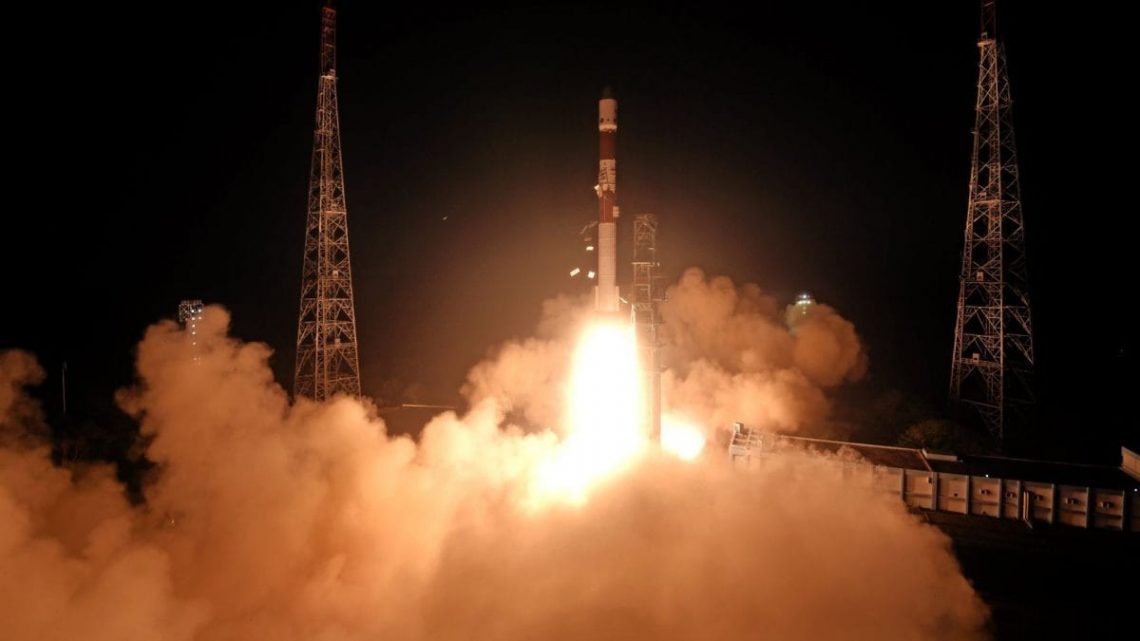India has joined an exclusive group of nations on Monday night after the country’s space agency Indian Space Research Organisation (ISRO) confirmed that its Space Docking Experiment (SpaDeX) on board a PSLV rocket was launched successfully from the Satish Dhawan Space Centre in Sriharikota.
Just after 10 pm on Monday (December 30, 2024), PSLV-C60 rocket lifted from the first launchpad at Sriharikota and placed two small satellites, each weighing 220 kg, in the right orbit of 475 km circular orbit, after over 15 minutes of flight. The first satellite separated 15.1 minutes after launch, followed by the second at 15.2 minutes.
“I announce the successful launch of the PSLV-C60 for the SpaDeX mission… The rocket has placed the satellites in the right orbit… congratulations to the entire team of the PSLV project who put the satellites in the right orbit. Also, the SpaDeX team which worked in a very innovative, novel, cost-effective docking demonstration mission using two small satellite bus architectures,” Somanath said.
“So, as far as we are concerned, the rocket has placed the spacecraft in the right orbit and the SpaDeX satellites have moved one behind the other, and over the period of time, it will pick up further distance, travel about 20 km away and then the rendezvous and docking process will start. And we hope that the docking process can happen in another week and the nominal time is going to be approximately January 7,” Somanath further said in his address from the Mission Control Centre.
Meanwhile, Director of the UR Rao Satellite Centre (URSC) M Sankaran explained that the ‘chaser’ and ’target’ spacecraft were launched with a small relative velocity, allowing them to move towards each other for potential future docking operations.
SpaDeX is a cost-effective technology demonstrator mission for the demonstration of in-space docking using two small spacecraft launched by PSLV.
As per ISRO, the primary objective of the SpaDeX mission is to develop as well as demonstrate the technology needed for rendezvous, docking, and undocking of two small spacecraft (SDX01, which is the Chaser, and SDX02, the Target, nominally) in a low-Earth circular orbit.
On Monday (December 30, 2024), two of ISRO’s spacecrafts that would aid the space agency in demonstrating space docking, a critical technology for future space missions, got separated successfully and were placed into the desired orbit.
The launch was initially scheduled for 9:58 pm on December 30 but was rescheduled to 10 pm following a “conjunction study” to ensure no close proximity between satellites in orbit.
The ISRO chief explained, “If you find there is any close proximity between satellites, then we have to move the current satellite a little bit. Either, we delay it or make it early, so that this proximity condition does not occur.”
Later, talking to reporters at the Satish Dhawan Space Centre, Somanath said this mission also has the POEM-4 which has 24 payloads to perform research and development.
Dubbed as a prelude to the ISRO setting up its own Space Station by 2035, the PSLV-C60 mission would also make India join an elite club in achieving this feat which is expected to take place in the coming days.
The 44.5-metre-tall rocket carried two spacecraft — Spacecraft A and B, each weighing 220 kg which would help in space docking, satellite servicing and interplanetary missions.
ISRO chief on Monday further said, “So, all of you have seen the majestic lift-off and the launch of the SpaDeX (Space Docking Experiment) rocket, and for us, this is the 99th launch of any vehicle from Satish Dhawan Space Centre. That is also a very important number. So, we are going for the 100th launch at the beginning of next year.”
The Indian space agency is gearing up to achieve a significant milestone with a Geosynchronous Launch Vehicle mission scheduled in January which will be the 100th launch from the Sriharikota spaceport.
Talking about ISRO’s planned launches for future, Somanath said, “In 2025, we will have many missions to start with the GSLV launching the (navigation satellite) NVS-02 in the month of January.”
ISRO successfully placed a navigation satellite onboard the GSLV-F12/NVS-01 rocket in May 2023. This GSLV rocket successfully deployed the NVS-01 navigation satellite, weighing about 2,232 kg into a Geosynchronous Transfer Orbit (GTO).
The NVS-01 was the first of the second-generation satellites envisaged for the Navigation with Indian Constellation (NavIC) services.
With inputs from PTI.
Link to article –
India’s Isro successfully launches SpaDeX mission for ‘in-space docking’

